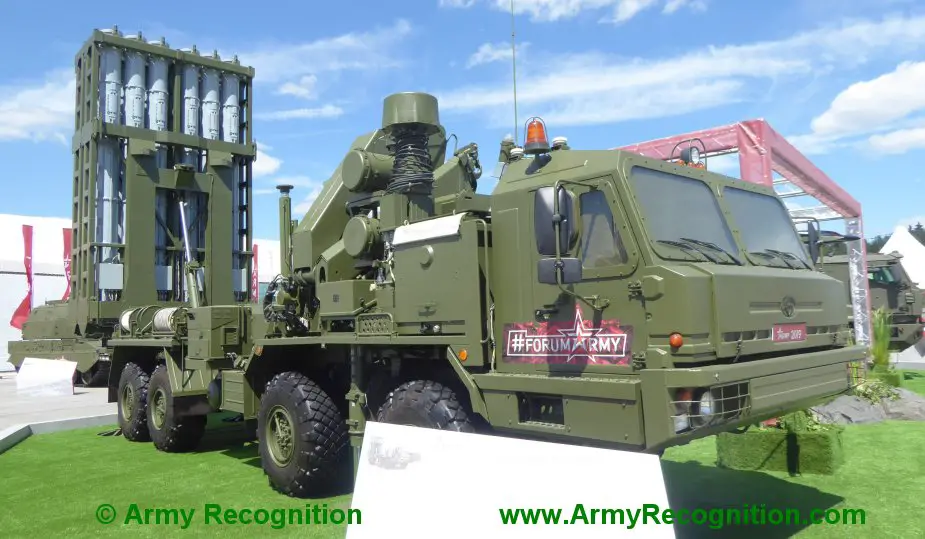Russian air defense trains new tactic to fight cruise missiles, drones
Air defense units will begin to train a new tactic to repel massive cruise missile and drone strikes. It was tested in the autumn of 2019 at Combat Brotherhood exercise. The Syrian experience was taken into account, the Izvestia daily writes.

S-350 Vityaz air defense missile system (Picture source: Army Recognition)
Air and missile defense repelled a massive strike by cruise and ballistic missiles and drones at Ashuluk range in Astrakhan region. Besides Russian units, the military from Belarus, Armenia, Kirgizia, Tajikistan and Uzbekistan participated in the drills. All drones and missiles were successfully downed, sources in the Defense Ministry said.
The exercise modeled a real situation that can emerge on CIS borders. The number of such exercises is to increase, former Air Force Deputy Commander for CIS air defense Lieutenant General in Reserve Aitech Bizhev said. "New weapons create new challenges. When the INF was in force, warships could deliver massive cruise missile strikes. Now they can be deployed in silos and the territory of engagement expanded. Intermediate and shorter-range missiles can now be deployed in Poland, Romania and the Baltic countries," he said.
In the 20th century, NATO deployed intermediate and shorter-range missiles in the west of Europe. The Soviet Union had a major buffer of the Warsaw Pact. Now the fly-in time of the missiles to Moscow and St. Petersburg can be reduced to five minutes. It is necessary to reinforce the satellite group and other reconnaissance, upgrade the radar field, develop and deploy at borders precision weapons for a preemptive strike to repel the threat, Bizhev said. The exercise focused on the fight against drones, as even makeshift vehicles can seriously damage troops and hardware. All terrorist drone attacks on the Russian Humaymim airbase and other Syrian facilities were analyzed and theoretical conclusions checked to confirm effectiveness.
The exercise also trained operations of mobile groups comprising Pantsir-S and radars. They can mount the capabilities of radar control of strategically important territories. A long-range detection radar can be deployed in a border area or in all potentially dangerous directions. Additional radars are necessary in highlands where it is difficult to detect low-flying targets or cruise missiles. The radars will collect reconnaissance information at distant approaches. They can determine the number of aircraft, the altitude and direction, as well as combat formations. The radars can operate together with antimissiles, aviation, border and coast guards, air traffic controllers in charge of civilian and military aircraft safety.
Pantsir can rapidly reinforce a strategic direction in any part of the country. The weapon can be engaged right upon arrival. The operators have to take their seats and switch on the equipment. They can operate in tandem with S-300 of various modifications, S-350 Vityaz and S-400 Triumf. The automatic control allows the radar and air defense to exchange information in real-time.
The fight against cruise missiles is a complicated combat mission for the air defense, expert Anton Lavrov said. "Multilayered air defense is necessary to repel the attacks. Ideally, it should have three zones. S-400 is in charge of the distant zone, Buk and Pantsir - middle zone, and Tor - close zone," he said.
In Syria, the Russian weapons are united by a single automatic control which provides guidance to several weapons from a single command post. The close interaction of air defense helps build an effective multilayered defense, the Izvestia said.
© Copyright 2020 TASS / Army Recognition Group SPRL. All rights reserved. This material may not be published, broadcast, rewritten or redistributed.


























